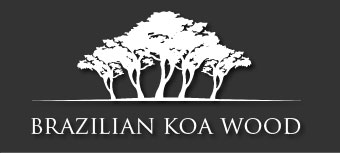Brazilian Koa Wood Information & Specifications
An extremely dense wood, Brazilian Koa is resistant to mold, decay, even termites. These benefits allow it to last longer than composite decking and domestic flooring species like oak, maple, and even bamboo. Brazilian Koa decking also offers high slip resistance and is safer than plastic deck options for kids who like to run around bare foot.
If you want to build a deck or install a floor that looks good and can take a pounding, you can't go wrong with Brazilian Koa.
Buy Brazilian Koa | Request a Free Quote
Brazilian Koa |
|
Photo |
 |
| Description | Brazilian Koa features reddish-browns, light to rusty orange, with dark brown streaks and spots. Grain can be irregular and interlocked with alternating layers of hard and soft wood. Texture is medium. Weight is 59lbs per cu. ft. |
| Country of Origin | South America |
| Botanical Name | Astronium Fraxinifolium or Astronium Lecointei |
| Other Names | Tigerwood, Goncalo Alves, Zebrawood, Urunday-Para, Mura, Bois De Zebre, Chibatao, Guarita, Aderno |
| Mechanical Properties | Strong in all categories and is not used in steam bending. |
| Janka | 1850 |
| Working Properties | Easier to work with than ipe. Moderate blunting effect on cutters. Reduced angle cutting is required due to hard and soft layers and irregular grain. Pre-drilling is required for nailing, but holds screws well. Glues easily and finishes with a high natural polish. |
| Durability | Highly durable and resistant to mold, decay, and termites. Not subject to beetle attack. Extremely resistant to preservative treatment. |
| Seasoning | Should be air dried slowly. Difficult to dry with strong tendency to warp and check. Small movement. |
| Uses | Used for interior hardwood flooring and exterior decking. High-class furniture and cabinetmaking, fancy goods and decorative work. Excellent for turning. Sliced veneers used in architectural paneling and face veneering. |
| Comments | Although sometimes called "Zebrawood", true Zebrawood is a different species. |
Buy Brazilian Koa | Request a Free Quote

